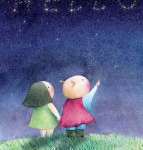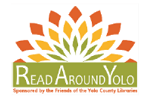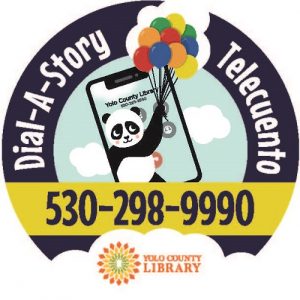Undocumented
It is no secret that anti-immigrant rhetoric has increasingly been normalized over the recent years and utilized as a scapegoat to attack BIPOC (Black Indigenous People of Color) communities. Chimamanda Ngozi Adichie once said: “…show a people as one thing, as only one thing, over and over again, and that is what they become.” Well, the narrative about the job takers, the criminals, the worst of the worst has stuck and it’s here to stay.
Within our own immigrant communities, however, we’ve always heard of the gut-wrenching stories about undocumented children in detention centers. At quinceañeras and family gatherings, we’ve always heard the Tias whispering to one another about how “so and so’s father” had their naturalization certificate torn into little tiny pieces and got taken by the Migra, the border patrol feet away from American soil. We’ve heard of all the atrocities that occur long before any foot is ever set on this imaginary line that separates us from a good and ordinary life.
It wasn’t until July of 2019 when the outcry of activists and whistleblowers finally put a spotlight on these issues for the rest of the country. Reports about the unsanitary and unsafe conditions children as young as five months old endure in these so-called detention centers led to an ongoing conversation that keeps unraveling the harsh reality. The traumatization of undocumented children furthers when they have to face the reality that they might have to appear in court often without legal representation resulting in a high probability of being sent back to the country they fled from or a country that is completely foreign to them.
Whether they are part of the 29,792 unaccompanied minors who were apprehended in the fiscal year 2021 alone or part of the 16.7 million people who have at least one undocumented family member in their household, their story matters and it must be told. However, according to the Cooperative Children’s Book Center (CCBC), which has been documenting statistics on diversity in children’s books, of the 3,682 children’s books they reviewed in 2018, 252 depicted Latinx characters and only 207 books were written or illustrated by Latinx creators. The statistics dwindle for other ethnicities compiled in this report. Unfortunately, there just isn’t any data available that compiles any children’s books dealing with the diverse stories about immigrants, refugees, and undocumented folk.
As Chimamanda Ngozi Adichie has said: “Stories have been used to dispossess and to malign, stories can also be used to empower and to humanize. Stories can break the dignity of a people, but stories can also repair that broken dignity.” These stories should be written accurately and they should be written by those who’ve lived through them. These stories must be told not only so that those who may not understand learn to empathize, but so that those whose legal definition blurs can see themselves reflected and begin to heal some of their trauma.
Here are 5 excellent books I recommend to start off with:
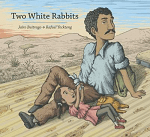
Two White Rabbits by Jairo Buitrago
This story is from the perspective of a child who uses counting as a coping mechanism to distract herself from the difficult experiences in her journey to a new country. Though never mentioned in the book, both she and her dad are most likely Guatemalan refugees as Guatemalan worry dolls are shown at the beginning of the book, and illustrations of soldiers are sprinkled throughout the book. She also travels via train, most likely alluding to the infamously dangerous train dubbed as The Beast that runs from Guatemala all the way to the United States.
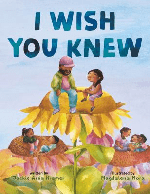
I Wish You Knew by Jackie Azúa Kramer
In this story, we follow Estrella whose father has been recently deported to their country of origin. She wishes people around her knew how her life has been affected by his absence. Her teacher notices she is withdrawn and distraught so she creates a safe space to talk about the things Estrella and her other students wish they knew. This gives Estrella the courage to share not only how much she misses her dad but also about the things they did together that brought her joy.
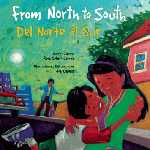
From North to South by Rene Colato Lainez
This story parallels Estrella’s story as Jose’s mom is also unexpectedly deported back to Mexico. Jose’s family lives close to The Tijuana US-Mexico border so Jose and his dad travel through the border to see his mom. Mama doesn’t know when she will come back to the United States. Jose and his dad must return to their home in the US without Mama. This is a book that tells the stories of countless children in between two borders.
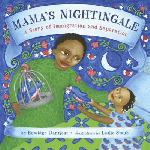
Mama’s Nightingale by Edwidge Danticat
Saya’s mom is sent to a detention center for being undocumented. It’s been a long time since her mom’s been home and the only thing she finds comfort in is her mother’s greeting on the answering machine. After Saya accidentally deletes the answering machine greeting, Mama sends bedtime stories inspired by Haitian folklore on a cassette tape. Saya decides she will write a story of her own, one that could potentially help get her mother back home.
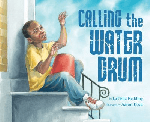
Calling the Water Drum by LaTisha Boyd
Henri’s uncle invites him and his parents to leave Haiti and come to New York City to live with him. Hoping for a better life, Henri and his parents leave on an old rickety boat. The boat overturns in the middle of a storm and Henri’s parents float further away as he calls to them. When he finally makes it to his uncle’s home in New York, he becomes withdrawn, unable to speak. One day he takes a bucket and uses it as a drum. It calls to him so he starts using it to cope and express his emotions.
Bonus Book:
Areli is a Dreamer by Areli Morales
This book is written by Areli Morales, a DACA ( Deferred Action for Childhood Arrivals) recipient who shares her own story as an undocumented immigrant child. In this moving picture book, Areli has to leave her home and Abuelita, to join her parents and her older brother Alex in New York. After her classmates bully her for not knowing English she learns about the term “Illegal”. Areli struggles with this imposed identity and the heavy consequences that could arise should anyone find out about her legal status. In the end, we see Areli give herself permission to dream and to exist just as she is.
TAGS: UNDOCUMENTED, IMMIGRANT, REFUGEE, STORYTELLING, SOCIO-EMOTIONAL
No comments
